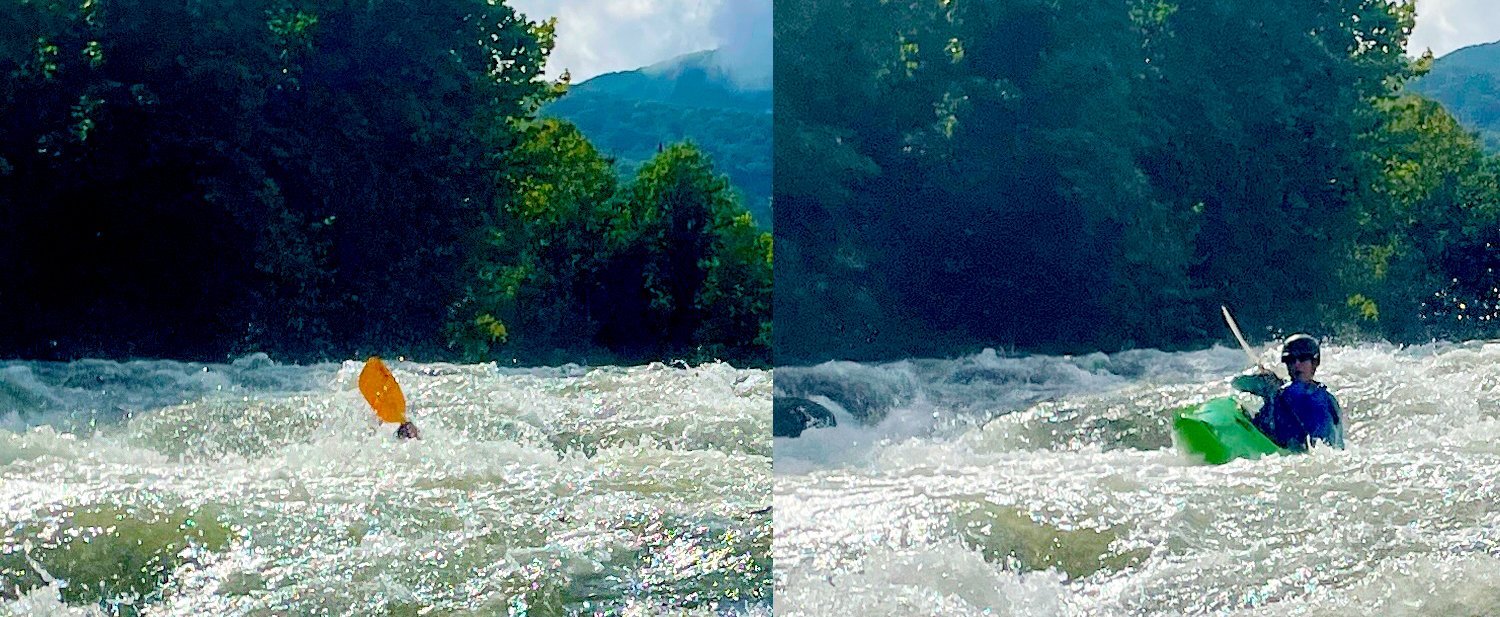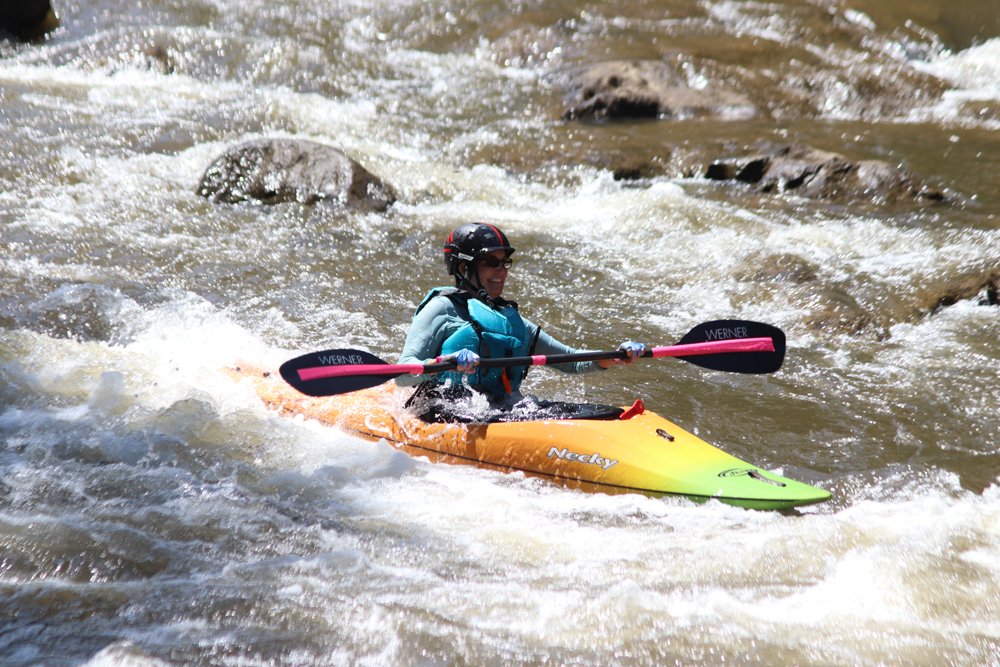We Are All Between Swims
Coming out of Radio Tower upright on a better day—during my first intermediate class!
Welcome to Whitewater
A Beginner’s Advice for Beginners
After my initial summer of whitewater paddling, I realized that the wet exit is the most important thing I learned during my intro to whitewater kayaking class. Without getting past my fear of being upside down and underwater—and possibly trapped under the spray skirt—I know I would not have been able to relax and focus on learning all of the other skills I needed to progress with a reasonable level of confidence.
This epiphany didn’t come from the many (and I mean many) times I had to pull my skirt and swim. It actually dawned on me in a garage, chatting with a super cool guy who had just sold me his almost-brand-new Jackson Karma and other gear, including a Werner carbon bent shaft paddle, which had “been in the pool more than the river.”
He went on to explain that he’d been rafting for many years, and a friend had gotten him interested in learning to whitewater kayak. Very early on, they were doing a lap on the lower Nolichucky, and he flipped at Radio Tower rapid. Releasing the spray skirt, a Level Six Ace, proved to be very difficult. It sounded like “an explosion” when it finally came off—and that was the last time he got into a whitewater kayak.
I told him that I also took my first serious swim at Radio Tower—during my very first class, which was my very first time ever in a whitewater kayak. Attempting to turn river left and into the rapid, I hit a rock, spun around and headed into the whitewater ass-backwards. Much to my surprise, I punched through the hole we had just scouted from the banks, but the glory was short-lived: I immediately hit the current from a secondary stream at the end of the rapid and promptly flipped.
I was doing exactly what I feared the most before I got on the water that day: overturning, spinning around fast underwater, and losing my orientation. However, rather than panicking, I used what I learned earlier that morning during class. I gave myself a second to calm down and reset (and I cannot emphasize how important this is); grabbed the cockpit rim on both sides; slid my hands toward the front of the boat while leaning forward; pulled the emergency release; and pushed myself out into the water. Overall, I remained surprisingly calm throughout, and when I popped up out of the water in the pool after the rapid, the instructor was there to help.
In the end, I actually was relieved that I could check off my first major swim immediately. It removed my anxiety about whether or not I could handle it without panicking, getting P.T.S.D., and giving up.
I replayed that swim in my mind on the two-hour ride home from buying the used kayak and gear, and I spent a lot of time pondering how important it was for me to learn the wet exit in a structured class environment:
We sat on the ground in the boat with all of our gear on and did a timed drill to see how long we could hold our breath. (I was somewhere around 50 seconds.)
We learned that, on average, it takes about 5 seconds to complete a wet exit. (What a relief!)
We practiced pulling the spray skirt release handle and discussed the importance of checking to make sure it is outside every time we put on the skirt.
We finally got on the river in a calm pool near the bank and practiced the wet exit with a stopwatch before moving downstream to continue the class.
In whitewater, we are all “between swims,” as I quickly found out, and I am forever grateful for what I learned and practiced in my first class every time I have to pull that release handle!
Sidenote: The Level Six Ace spray skirt came home with me that day, but I’ve never used it. After many tries and a lot of frustration, I couldn’t get it on the Karma by myself, unlike my current NRS skirt, and that made me nervous. (I tried wetting it, leaving it on the cockpit to hopefully stretch some, etc., but I didn’t have any luck.) I later asked some experienced paddlers about it, and I was jokingly advised that the heavy-duty Ace, which has an implosion bar, was above my paygrade as a beginner. It’s designed for harsher conditions and bigger rapids than I’m currently paddling.
Lisa is a fellow APE who lives in Burnsville, NC. She began her whitewater journey in 2023—30 years after taking her first rafting trip on the Ocoee and falling in love with the rivers of the Southeast.

